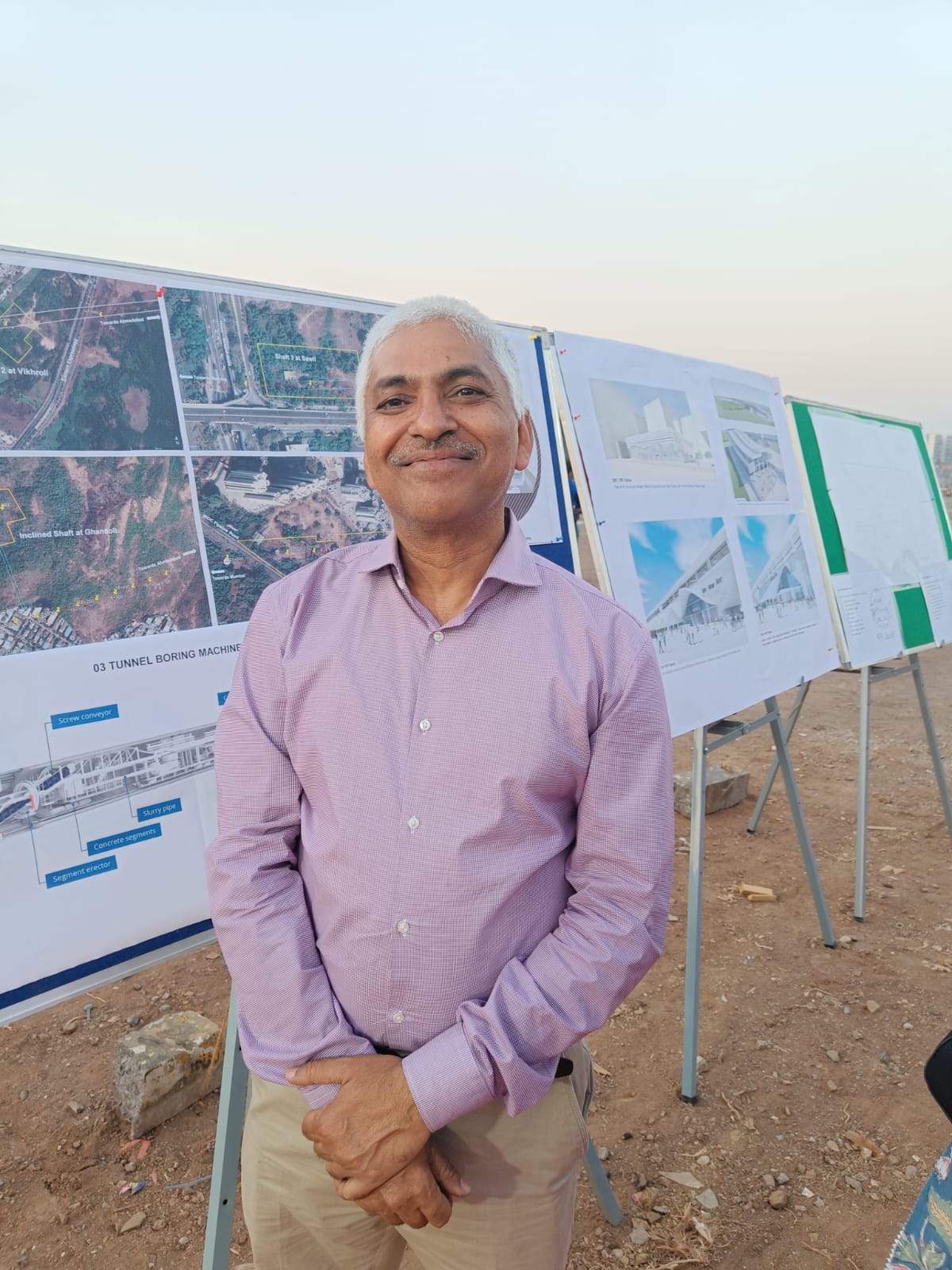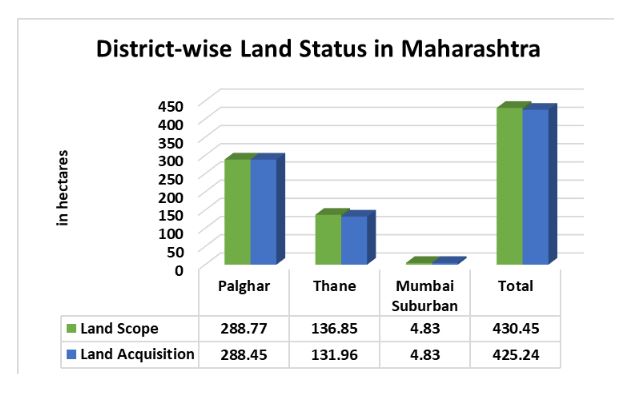Work on the bullet train has gained momentum in Maharashtra, with the Bombay High Court terming it a project of “national importance and in public interest”.
On Thursday, News18 visited the Bandra Kurla Complex site, where the only underground station of the project will be built. Speaking to News18, UP Singh, Chief Project Manager, National High-Speed Rail Corporation Limited (NHSRCL), said that the platform is planned to be built at a depth of about 24 meters from the ground level.
“There will be three floors including platforms, concourses and service floors. The station will have two entry/exit points, one leading to the nearest metro station on Metro Line 2B and the other to MTNL Bhavan.
Located in the heart of the city’s major upscale commercial hub, the station will assist people commuting to Mumbai daily for work from Thane or Virar.
“You can reach here in 10 minutes from Thane and in about 30 minutes from Virar. With the help of metro line, commuters can reach their destination in next 15-20 minutes.
Integration with other modes of transport like buses, autos and taxis is also planned for non-metro commuters.
Explaining the details of the station, Singh said it has been planned in such a way that adequate space is available at the concourse and platform level for passenger movement and amenities.
“Dedicated skylight provisions have been made for natural lighting. Planned facilities for passengers at stations include security, ticketing, waiting rooms, business class lounges, nurseries, rest rooms, smoking rooms, information kiosks and relevant retail, public information and announcement systems, and CCTV surveillance.
Under the project, there will be four stations in Maharashtra – Mumbai (BKC), Thane, Virar and Boisar – and eight in Gujarat – Vapi, Bilimora, Surat, Bharuch, Vadodara, Anand/Nadiad, Ahmedabad and Sabarmati.
In addition, 98.88 per cent of the total land in the project has been acquired – 98.91 per cent in Gujarat and 98.79 per cent in Maharashtra. Maharashtra had a requirement of 430.45 hectares and out of this, 425.24 hectares was acquired. Entire land has been acquired in Mumbai suburbs.
The land for the BKC station has been acquired from the Mumbai Metropolitan Region Development Authority (MMRDA). Singh said that after the completion of the underground work, the ground level would be given back to the MMRDA. In Mumbai, the project is 156 km long and divided into three civil packages.
India’s first undersea tunnel
In the second package, a tunnel will be built between the Bandra-Kurla Complex in Maharashtra and the underground station in Shilphata. The construction of the 21 km long tunnel also includes a seven km long sea tunnel, which will be India’s first tunnel. Tunneling will be done using Tunnel Boring Machine (TBM) and New Austrian Tunneling Method (NATM), Singh explained.
The technical bid for this package was opened on Thursday. Two bidders – Afcons Infrastructure Limited and Larsen & Toubro Limited – have submitted their bids.
“The seven kilometer long undersea tunnel at Thane Creek will be the first undersea tunnel to come up in the country. It will be a single tube tunnel to accommodate twin tracks for both the top and bottom. Besides this, 39 equipment rooms at 37 locations will also be built adjacent to the tunnel location as part of the package,” Singh told News18.
He told that TBM with 13.1 meter diameter cutter head will be used to make this tunnel. “Usually 5-6 meter diameter cutter head is used for urban tunnels used in MRTS – Metro system,” he said.
To speed up the work on the intertidal zone, he also told that tunnels will be made from both the sides. In total, three TBMs will be used and they will account for about 16 km of the tunnel and the remaining five km will be through the New Austrian Tunneling Method (NATM).
“The tunnel will be about 25-65 meters deep from the ground level and the deepest construction site will be 114 meters below Parsik hill near Shilphata. BKC will facilitate the construction of three shafts at Vikhroli and Savli at an estimated depth of 36, 56 and 39 meters respectively,” he said.
The total length of the corridor is 508 km – 156 km in Maharashtra, 4 km in Dadra Nagar Haveli and 384 km in Gujarat. The maximum operating speed will be 320 kmph and the total travel time will be 2.58 hours. There will be three depots, one at Thane in Maharashtra and the other two at Surat and Sabarmati in Gujarat. The operational control center will be at Sabarmati.
read all latest india news Here

